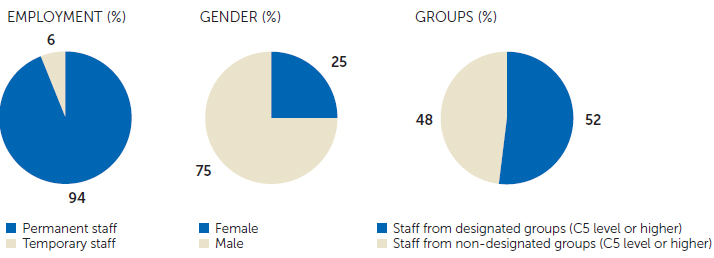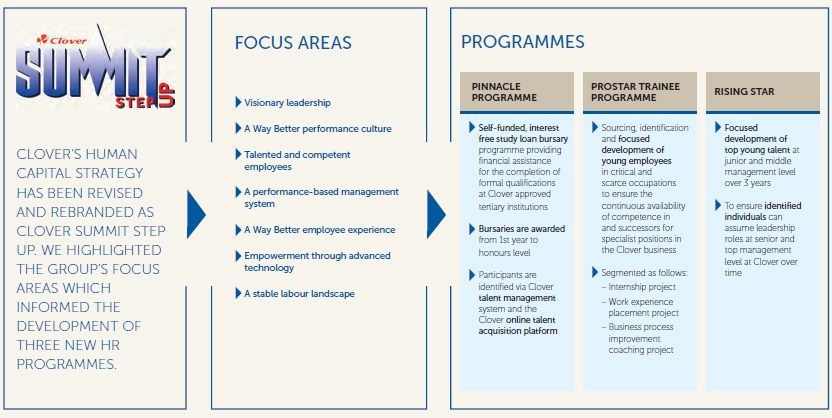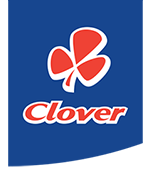HUMAN CAPITAL OUTCOMES
 |
HUMAN CAPITAL REFERS TO OUR EMPLOYEES, THEIR TALENT, SKILLS AND PERSONAL ATTRIBUTES THAT PLAY A VITAL ROLE IN CREATING VALUE FOR ALL OUR STAKEHOLDERS. CLOVER SEES HUMAN CAPITAL AS ONE OF ITS MOST VITAL ASSETS IN CREATING SUSTAINABLE VALUE. The Company has revisited it’s human capital strategy in the light of changing demands and the need to align with the evolving labour market. The human capital strategy has been branded as Summit Step up. |
FOCUS AREAS FOR 2018
| Legislative compliance | |
| Attraction and retention of employees | |
| Change of labour landscape | |
| Productivity and alignment of employees | |
| Workforce planning | |
| Employment equity | |
| Innovation and technology | |
| Learning and development |
COMPOSITION OF THE CLOVER TEAM

INPUTS
| Inputs | Change | 2018 | 2017 |
| Total number of employees (and contractors) | (7.89%) | 8 044 | 8 733 |
|---|---|---|---|
| Total amount paid in salaries and wages (R’000) | (6.07) | R1 794m | R1 910 m |
| Total number of employees trained | (19.64% | 2 030 | 2 526 |
| Rand value of training spend | +25.63% | R20 647m | R16 435m |
| Percentage of permanent employees belonging to a trade union | +22% | 61% | 50% |
| Number of employees enrolled on learnerships, skills programmes and apprenticeships | (2.71%) | 682 | 701 |
| Number of employees on formal workplace experience and in-service training programmes | +12.20% | 46 | 41 |
| Number of bursaries (employed/ unemployed) granted for degree and diploma studies | (88.89%) | 1 | 9 |
OUTCOMES
| Fully compliant with relation to all human capital and legislative requirements. | ||
| Attraction and retention of employees received continued focus and the turnover rate remained low at 7.79%
for the year. The Company, in partnership with PWC embarked on a national salary benchmarking exercise to ensure alignment with external market norms. |
||
| Union relations improved in the period under review and days lost due to industrial action were limited. | ||
| Structures were optimised and business restructuring commenced in the latter part of the period under review. | ||
| Talent management processes were improved and recruitment cost was substantially reduced. | ||
| Continued progress towards employment equity targets and objectives were made. | ||
| Approval was obtained to invest in new human resource information system technology and the development commenced. | ||
| The Company’s competence profile was improved in specific focus areas and aligned with national skills development priorities. |
MATERIAL TRADE-OFFS
Due to the constrained economic environment in South Africa, and the challenging trading conditions, the Group implemented various initiatives, to streamline and optimise business operations. This unfortunately resulted in a number of employees being retrenched.
While this benefitted financial capital due to lower costs, it had a negative impact on human capital.
FUTURE OUTLOOK
The revised human capital strategy has been rebranded as Step up, and includes the following focus areas:

- Visionary leadership
- A Way Better performance culture
- Talented and competent employees
- A performance-based management system
- A Way Better employee experience
- Empowerment through advanced technology
- A stable labour landscape
THE FOCUS AREAS UP CLOSE
| Legislative compliance | |
The legislative environment remained a prominent focus and various initiatives were undertaken to ensure compliance. The Company’s master data, payroll processes and controls were subject to an audit by Deloitte and compliance was confirmed. Process improvement suggestions are being implemented where justified. A framework has been established that will guide the implementation of POPIA once promulgated. The management of working hours remains a key focus given the Company’s challenging operational requirements. |
|
| Attraction and retention of employees | |
Various mechanisms are in place to ensure the attraction and retention of suitable talent. The Company’s working climate is such that it supports stability in workforce turnover. This results in adequate depth in the scarce and critical skills areas of the business. The revision of service providers in the talent sourcing space was undertaken to ensure alignment with the Company’s talent acquisition needs. The Company has embarked on various initiatives to enhance its attraction and retention methodologies. These initiatives are focussed on strengthening the Company’s employment brand and systems to improve employee experience. |
|
| Change of labour landscape | |
The Company has managed the transition to a multi-union environment positively with minimum disruption to the business. Relations with the various unions remained complex. Management had to find practical and innovative ways to communicate with employees in the absence of a dominant union. The Company believes in sound relations with trade unions based on mutual respect and collaboration on issues of mutual interest and will continue to take steps in this regard. |
|
| Productivity and alignment of employees | |
During the year under review initiatives were implemented to streamline and optimise structures and operations. This resulted in a number of positions being abolished. Affected employees were identified and where possible re-deployed in other parts of the business where deployment opportunities existed. In addition, a number of employees exercised the option to accept voluntary severance packages. Formal restructuring processes took place at the Nelspruit and Clayville sites. Alignment of employees to the business strategy and objectives is of vital importance. Business objectives are cascaded down and result in individual performance agreements which are formally managed. This business process is well embedded in the Company and is the foundation of the Company’s incentive scheme for the recognition of individual performance. Various communication platforms are utilised to engage employees on challenges facing the business and the strategy and plans to ensure sustainability and growth. |
|
| Workforce planning | |
The Company continuously focus on roles and structures to ensure optimal integration and alignment of functions. Talent acquisition, staff movement and succession management is a planned process to ensure the appointment and development of the right people. The Company is currently investing in new technology that will improve its capability to manage these processes more effectively. |
|
| Employment equity | |
Clover fully supports employment equity in the workplace and various measures are in place to contribute to our employment equity objectives. Consultation is taking place at employment equity forums at different levels in the business. Clover continues to make progress in establishing a more diverse workforce profile. Numerical targets at junior and middle management level for the year under review have been met. Clover supports the relevant codes of good practice and does not accept unfair discrimination of any type. The Company purposefully strives to provide equal opportunities for employees to grow and develop, based on merit and ability. Clover’s employment equity policy clearly sets out responsibilities for different levels of management in managing employment equity. |
|
| Innovation and technology | |
A detailed Learning Management System (LMS) was scoped and the Company will be rolling out the system in the new financial year with focus on the following modules: recruitment and onboarding, learning and talent management. This will assist Clover managers to better manage these critical business processes in line with best practice. Once fully implemented, LMS will greatly improve the reporting capability in respect of compliance and management requirements. The Company additionally embarked on a project to identify, define and implement a standardised reporting framework and to enhance all human resources user system and reporting capability in order to provide accurate and insightful human resources analytics to the business. |
|
| Learning and development | |
Clover remained committed to the broadening of the competence levels of their employees in alignment with the growth strategy of the business. Skills development initiatives in the year under review focussed on:
The development of skills in partnership with government skills development initiatives was continued for the period under review. The Company is continuously exploring opportunities to support viable programs in alignment with business needs that will contribute to the National Skills Development Strategy. |
|
CASE STUDY
CLOVER’S SUMMIT STEP UP PROJECT





 Report on the six capitals
Report on the six capitals
